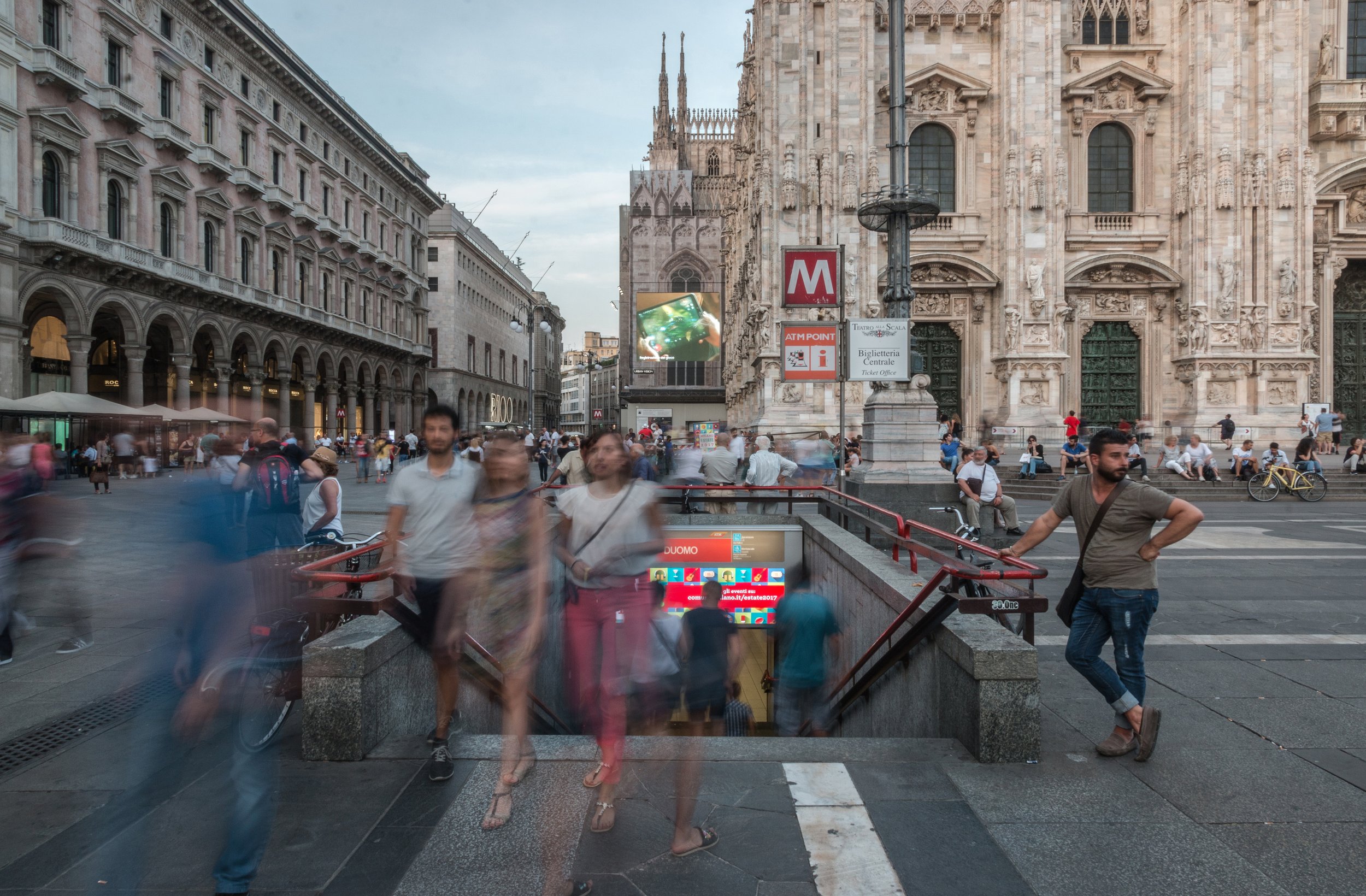STOP-
MOTION
Cities like Milan, with millions of inhabitants, share similar characteristics shaped by two distinct layers. The first layer represents a state of preservation, rooted in the cultural and historical aspects of the city. This static layer is often experienced by tourists and travelers who briefly pass through, engaging with the city’s timeless monuments and traditions. The second layer, however, reflects a state of constant motion and change, tied to the modern, fast-paced life of its permanent residents. In these cities, there is little time to pause—citizens rush to catch trains and buses, work long hours, and eat quickly, all while hoping for a fleeting moment of relief from this relentless, exhausting cycle.
Piazza Duomo is Milan's central attraction and a symbol of northern Italy's grandeur. People from across Europe and around the globe visit the city just to witness the magnificence of the Duomo. Located in the heart of Milan, the Piazza is not only a tourist hub but also a crossroads for the city's everyday life, surrounded by important offices and companies. It’s a space where two contrasting experiences of life overlap: the tourists and the Milanese citizens.
For first-time visitors, the Duomo’s majesty is overwhelming—they pause, transfixed, some lying on the ground or framing the cathedral through their camera lenses, eager to immortalize their presence and fulfill their dream of being there. They are like immigrants in a broader sense, encountering a new world for the first time, full of wonder and awe.
On the other hand, the Milanese move through the Piazza with a sense of detachment, having grown numb to its splendor. For them, the Duomo has become just another part of their urban routine, a background to their fast-paced lives. Like immigrants in a different sense, they seek brief moments of escape, navigating the demands of their daily existence.
This "stop-motion" effect—where tourists are awestruck while locals rush by—plays out daily around tourist landmarks in metropolises like Milan. The city, which hosts millions of inhabitants from diverse races, religions, and nationalities, presents an apparent unity at first glance. Yet, upon closer inspection, it reveals clear distinctions in how people experience its spaces, embodying different journeys in the same city.









